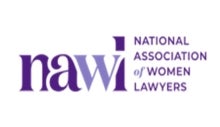The National Association of Women Lawyers (NAWL) has just released its Fifth Annual Survey on Retention and Promotion of Women in Law Firms. The Survey is the only national study of the nation’s 200 largest law firms which annually tracks the progress of women lawyers at all levels of private practice, including the most senior positions, and collects data on firms as a whole rather than from a subset of individual lawyers.
Overview:
The 2010 NAWL Survey data is stunning for its constancy, underscoring the negative impact that changing law firm structures are having on women's success in firms. Women attorneys continue to lag behind their male counterparts in firm leadership, equity positions and as rainmakers—three areas so critical to law firm success where women need to be present and be represented.
The survey found the following:
- The Impact of Partnership Structure: Partnership structure continues to evolve with one-tier, two-tier, and mixed-tier firms. The data shows that women appear to be more successful in one-tier firms and mixed-tier firms. In 2010, women lawyers constitute 18% of equity partners in one-tier firms, 17% of equity partners in mixed-tier firms, and 14% of equity partners in two-tier firms.
- Fixed-Income Equity Partners: In the typical mixed-tier firm, approximately 6% of all equity partners are "fixed-income equity partners," and women represent a surprising 73% of these fixed-income equity partners. Fixed-income equity partners are those lawyers in mixed-tier firms who are required to contribute capital to the firm but nevertheless receive only an annual salary and performance-based bonus rather than sharing in the overall profits of the firm.
- The Impact of Contract and Staff Attorneys: Approximately 80% of AmLaw 100 firms and 50% of AmLaw 200 firms hire staff attorneys. Half of large firms hire contract attorneys and about half of the large firms hire both staff attorneys and contract attorneys. The Survey shows that over 60% of staff attorneys are women. This is the highest percentage of women lawyers in any category of practice, and by definition it is a category with little possibility of career advancement.
- Terminations: During the 2010 Survey period, 93% of large law firms terminated lawyers. Termination ratios for men and women have remained proportionate to their numbers as associates and partners since the 2009 Survey. But, terminations are highest among part-time attorneys, a position largely occupied by women: 56% of firms terminated one or more part-time employees, and in 83% of those firms, more women than men were terminated.
- Equity Partnership: The percentage of women equity partners is unchanged over the last five years; women still only account for about 15% of equity partners. It continues to be much more difficult for women than men—by a factor of almost six to one—to become equity partners in large firms.
- Law Firm Leadership: The average firm’s highest governing committee includes only one or two women among its members. And about 10% of the nation’s largest firms have no women at all on their governing committees.
- The Compensation Gap: As in previous years, female associate compensation appears to be on par with male associate compensation. However, thereafter the compensation gap widens at every higher level. This year the compensation gap widened further at the equity level, as women equity partners earned only 85% of the compensation earned by their male counterparts.
- Rainmaking: The pattern seen in the 2009 Survey continues, with women attorneys by and large not receiving credit for rainmaking. 46% of firms credited no women at all among their top ten rainmakers.
For the Survey Report see: http://nawl.timberlakepublishing.com/files/NAWL%202010%20Final%282%29.pdf




 />i
/>i

